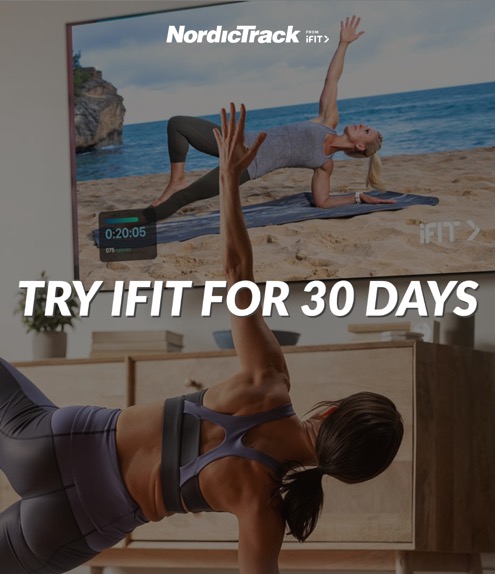
Every runner reaches that moment when mileage alone stops delivering results. You log your intervals, keep your long runs steady, maybe even cross-train, yet your stride still collapses late in the run, your hips tighten, and your back feels fatigued.
That’s not a stamina issue. That’s a stability issue.
Your body’s efficiency depends on how well your core transfers power through every stride. When your center wobbles, energy leaks. That’s where Pilates changes the equation by training the muscles that hold everything together so you can run stronger, longer, and with better control.
Why Core Strength Determines Running Efficiency
Running is as much about control as it is about cardio. Your core stabilizes your pelvis, keeps your posture upright, and coordinates how force travels from foot strike to forward motion.
According to the Mayo Clinic, a strong core improves posture, balance, and stability¹. Those same qualities improve what researchers call running economy², which measures how efficiently you use oxygen to sustain pace. A weak core leads to wasted motion, fatigue, and eventually, injury.
When your center is strong, your body moves like one unified system instead of disconnected parts. These improvements can translate to smoother motion and reduced energy waste over time².
What Pilates Adds That Strength Work Often Misses
Pilates is precision training for your foundation. Developed by Joseph Pilates in the early 1900s to restore alignment and function³, it targets the stabilizing muscles beneath the surface, the deep abdominals, back extensors, hips, and glutes that hold your frame steady.
Unlike traditional strength training, Pilates doesn’t chase maximum load; it builds maximum control. Every repetition begins with breath and ends with balance. Studies show Pilates improves trunk strength, flexibility, and endurance, especially in populations with sedentary or repetitive movement patterns⁴.
For runners, that means less rotation, better hip alignment, and fewer overuse injuries. Over time, you learn to move through your core, not around it.

The Mechanics Behind A More Efficient Stride
Running economy, aka the oxygen cost of maintaining a given pace, depends on both your cardiovascular system and your neuromuscular coordination². When your posture collapses or your hips drift, your body burns more energy just to stay upright.
Pilates directly influences those mechanics by teaching proprioception (body awareness) and muscular sequencing. With regular practice, you strengthen the small stabilizers that prevent form breakdown during fatigue. The result: smoother ground contact, quicker turnover, and better energy transfer.
That’s performance science in motion, not just an abstract theory.
When And How To Integrate Pilates Into Your Training Week
You don’t have to overhaul your training plan to gain results. Many studies on Pilates interventions observe measurable improvements after four to six weeks of consistent practice⁴.
Here’s a simple integration guide:
- Pre-run activation (10–15 minutes): Focus on exercises like single-leg bridges, bird dogs, and side planks to wake up your stabilizers.
- Recovery days (20–30 minutes): Use guided iFIT Club Pilates classes to restore mobility and length while maintaining alignment.
- Off-season or base phase: Add longer mat or wall Pilates sessions to reinforce posture and breathing patterns.
On iFIT, you’ll find Pilates series and guided sessions from expert trainers who teach alignment-based routines designed specifically to complement endurance training. These sessions require little to no equipment, perfect for runners balancing busy schedules.
How NordicTrack Fits The Equation
Pilates builds the foundation. Using fitness equipment that supports posture and controlled movement can help reinforce that training during dynamic exercise.
Incline training may complement Pilates by engaging similar stabilizing muscles used in alignment-focused workouts.
Together, these practices can contribute to better body awareness and running form when integrated into a broader training program.
Pair your Pilates practice with adaptive cardio that challenges balance and posture under real movement. The NordicTrack X24 Incline Trainer and Commercial 2450 Treadmill both feature iFIT SmartAdjust™, automatically matching incline and speed to your effort.
That means your terrain changes in real time, engaging the same stabilizers you build on the mat. Incline training challenges hip and core stability, reinforcing the alignment principles Pilates develops². This combination turns your “cross-training” days into progress days with a steady routine.
If you are looking for Pilates-specific equipment, check out a Reformer instead.

The new Ultra Reformer Series offers a home-friendly option for runners looking to integrate reformer-based stability work into their cross-training routine. Both the Ultra 1 Reformer and the Ultra 1 Reformer RX-S use the Smart Spine enclosed resistance system and a smooth, steady carriage glide to help you train the deep stabilizing muscles runners rely on for efficient movement. Pairing iFIT Pilates programs with reformer work allows you to strengthen your core, hips, and posture with far more precision than bodyweight training alone. With a steady cadence, this combination may support cleaner mechanics, smoother turnover, and improved control when fatigue sets in.
Learn more about the Ultra Reformer Series and join the pre-order list today.
The Final Takeaway
Runners talk about heart, lungs, and legs, but true power comes from your center. Pilates rebuilds your foundation so your endurance work actually pays off.
With consistent practice, you’ll notice smoother transitions between strides, fewer compensations, and less post-run fatigue. You won’t just run longer; you’ll run better.
Strength from your center isn’t optional! It’s the missing link between mileage and mastery.
FAQ: Pilates for Runners
If your hips drop or your upper body rotates late in a run, your stabilizers are fatiguing. Pilates retrains those deep muscles to hold alignment longer³.
Most runners notice improved posture and reduced fatigue within four to six weeks of consistent Pilates sessions⁴.
No. It complements it. Pilates improves stability and control, while traditional strength work builds power and force production⁴.
Yes. Mat routines effectively train deep core muscles without equipment, improving flexibility and coordination⁵.
Yes. The diaphragmatic breathing in Pilates improves oxygen efficiency and helps control rhythm during long runs¹.
Use short sessions before runs to activate stabilizers or longer flows on recovery days for mobility and realignment³.
Some studies suggest that Pilates may help reduce injury risk by improving posture, alignment, and muscle control⁴.
Try Find Your Strength and Flow in Jeni DelPozo’s Pilates Series as it is beginner-friendly and a fun introduction to Pilates.
Reformer Pilates can help build core control, alignment awareness, and steadier movement patterns, which may support how your body feels during longer runs. Many runners notice that working on posture and coordinated movement on a reformer carries over into their overall sense of stability, especially when fatigue sets in¹.
Choose the Ultra 1 Reformer if you want a compact, home-friendly design for consistent core and alignment training. Choose the RX-S if you prefer a studio-grade experience with higher resistance for advanced strength, stability, and athletic conditioning.
Explore More
- How to Start Running
- Compare Cardio Machines
- Ready to Level Up: Why a Personalized Training Program Gets You Real Results
- Explore Boutique Fitness Favorites with Club Pilates on iFIT
- Introducing the NordicTrack Ultra 1 Reformer Series
References
- Mayo Clinic. Core Exercises: Why You Should Strengthen Your Core Muscles.
- Sports Medicine Open Running Economy: Measurement, Norms, and Determining Factors.
- Journal of Bodywork and Movement Therapies. Pilates Uses a Combination of Exercises to Improve Flexibility, Posture, and Stability.
- Frontiers in Physiology. Pilates to Improve Core Muscle Activation in Chronic Low Back Pain: A Systematic Review.
- Journal of Bodywork and Movement Therapies. Effects of Pilates Exercise on Trunk Strength, Endurance and Flexibility in Sedentary Adult Females.
Disclaimer: The primary purpose of this blog post is to inform and entertain. Nothing on the post constitutes or is intended to be a substitute for professional medical advice, prevention, diagnosis, or treatment. Reliance on any information provided on the blog is solely at your own risk. Always seek the advice of your physician or other qualified health provider with any questions you may have regarding a medical condition, and please consult your doctor or other health care provider before making any changes to your diet, sleep methods, daily activity, or fitness routine. Do not disregard professional medical advice or delay seeking it because of information available on this blog. NordicTrack assumes no responsibility for any personal injury or damage sustained by any recommendations, opinions, or advice given in this article. Always follow the safety precautions included in the owner’s manual of your fitness equipment.


